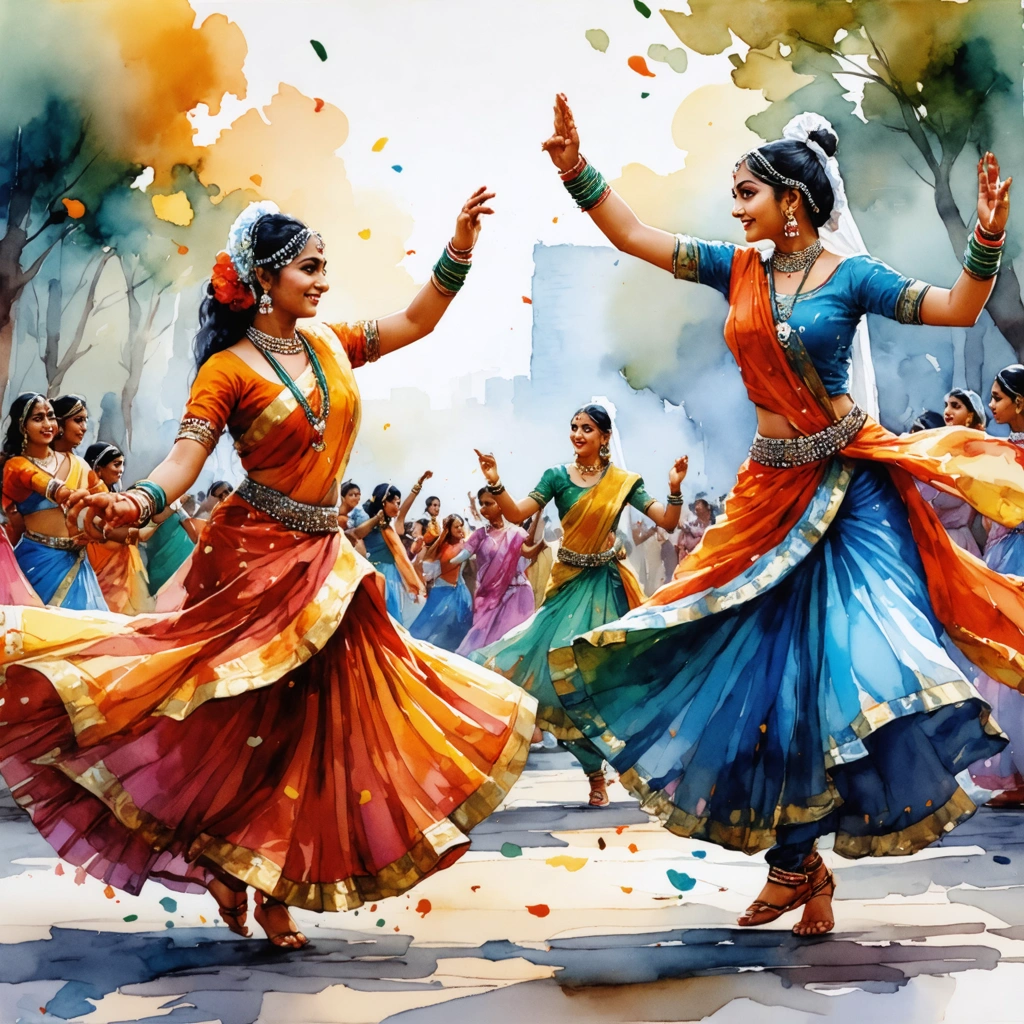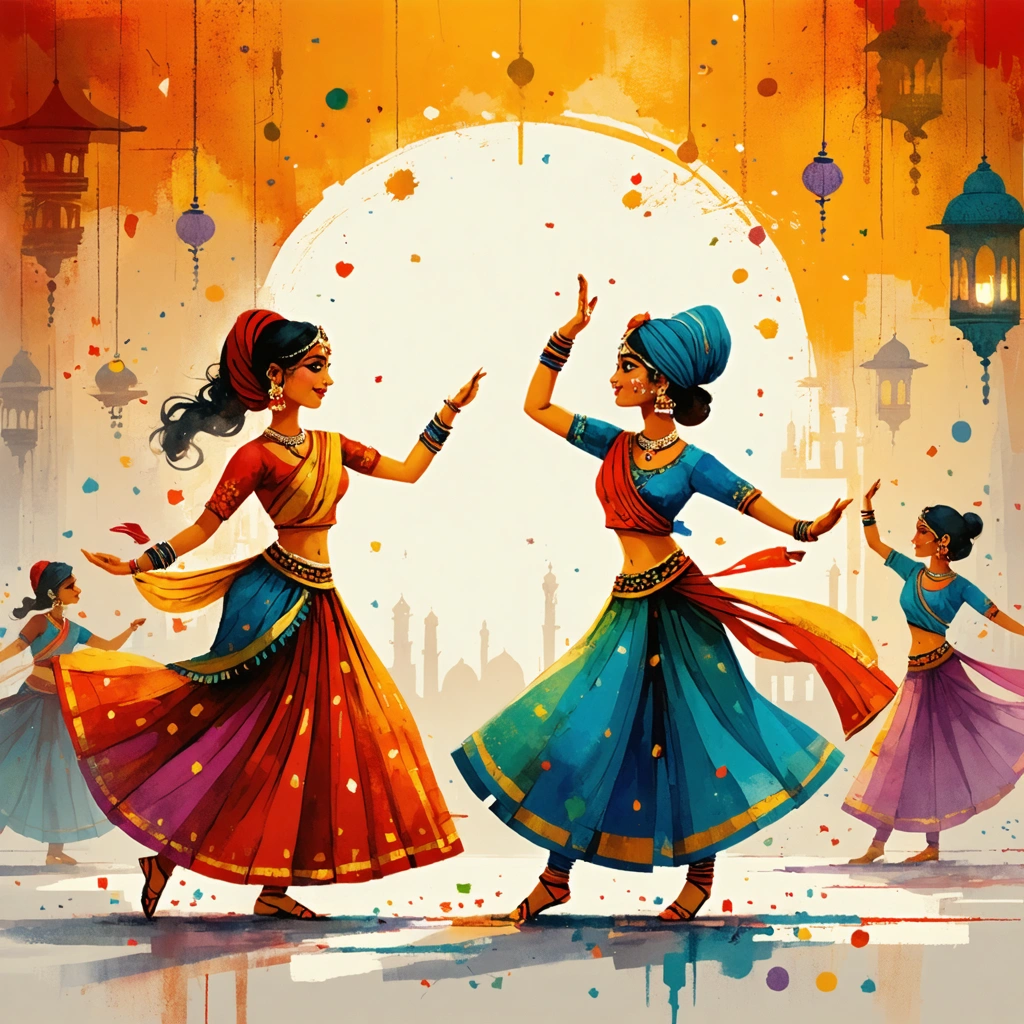
Why Do We Feel Drawn to Festival Dances Like Garba, Bhangra, and Kathak?
Imagine yourself standing in the middle of a bustling Indian festival in 2025—vibrant colors swirling all around you, the rhythmic beats of drums echoing in the air, and a sea of dancers moving in perfect sync. But what is it about these dances that captures our hearts year after year? Is it simply the entertainment, or is there something deeper that connects us to these ancient art forms?
In today’s fast-paced world, cultural identity sometimes feels like a fading thread. Festivals, with their dance traditions, act as a lifeline to the past and a bridge to the future. Yet, many people struggle to grasp the true significance behind these mesmerizing moves. Take Garba, for example—this energetic dance from Gujarat isn't just about spinning in circles; it’s a ritualistic celebration of life and devotion. Bhangra, originating from Punjab, might look like pure fun, but beneath the surface, it’s a powerful expression of agricultural prosperity and community pride. Then there’s Kathak, a classical dance form that narrates stories through intricate footwork and graceful spins, tying together history, mythology, and spirituality.
Despite their rich backgrounds, these dances are often reduced to mere entertainment or tourist attractions during festivals. This oversimplification risks diluting their cultural essence and leaves many festival-goers unaware of the profound meanings embedded in every step and gesture. How can we appreciate the true beauty of these dances if we don't understand their roots and evolution? And how do these timeless traditions stay relevant in 2025's multicultural and technologically advanced world?
Unlocking the Heartbeat of India’s Festival Dances in 2025
What if we could dive deeper into these dance forms, peeling back layers to reveal their stories, their spirit, and their significance in contemporary society? That’s exactly what this article aims to do. Whether you’re a curious traveler, a dance enthusiast, or someone keen to explore India’s cultural fabric, you’re about to embark on a journey through the enchanting world of festival dances.
We will explore how Garba, Bhangra, and Kathak have evolved to fit modern festival contexts while retaining their traditional charm. You’ll discover:
- The origins and symbolic meanings behind each dance
- How these dances unify communities and celebrate seasonal cycles or religious devotion
- The innovative ways performers and organizers are keeping these traditions alive and engaging for younger generations
- Insights into the costumes, music, and movements that define these dances
By the time you finish reading, you’ll see these dances not just as captivating performances but as living, breathing embodiments of India’s cultural soul—continuously adapting, thriving, and inviting everyone to join the celebration.
So, get ready to tap your feet, feel the pulse of the dhol, and understand the stories behind the spins and claps. Let’s uncover how 2025’s cultural festivals are more than just events—they are vibrant expressions of heritage through the universal language of dance.

Exploring the Dance Forms of India’s Cultural Festivals in 2025
What are the prominent dance forms associated with India’s cultural festivals in 2025?
India is renowned for its vibrant cultural festivals, many of which center around traditional dance forms that have been passed down through generations. In 2025, some of the most prominent dance styles featured in these festivals include Garba, Bhangra, and Kathak. Each of these dance forms carries deep historical, religious, and social significance, reflecting the diverse cultural fabric of India.
Garba is traditionally performed during the Navratri festival, especially in Gujarat, where communities come together to celebrate the goddess Durga with rhythmic clapping and circular movements. Bhangra originates from Punjab and is usually performed during harvest festivals like Vaisakhi, characterized by energetic and vigorous movements. Kathak, on the other hand, is a classical dance form prevalent in North India, often showcased during cultural events and festivals that celebrate classical arts.
Why are dance forms like Garba, Bhangra, and Kathak integral to Indian cultural festivals?
Dance in India is more than just entertainment; it is a medium for storytelling, spiritual expression, and community bonding. Garba, Bhangra, and Kathak are integral because they:
- Preserve cultural heritage: These dances embody centuries-old traditions and rituals, serving as living archives of India’s diverse history.
- Unite communities: Festivals featuring these dances bring people from various backgrounds together, fostering social cohesion and collective joy.
- Promote regional identity: Each dance form highlights the unique cultural traits of its region, contributing to India's cultural mosaic.
- Attract tourism and economic benefits: Cultural festivals with these dance performances draw millions of visitors, boosting local economies and promoting cultural exchange.
For example, the Navratri festival in Gujarat attracts over 2 million participants annually who engage in Garba, generating significant economic activity and promoting cultural tourism.
How do Garba, Bhangra, and Kathak differ in style and performance during festivals?
Understanding the distinctive characteristics of each dance helps appreciate their roles during festivals:
- Garba: This dance involves circular movements around a central lamp or image of the goddess Durga, symbolizing the cyclical nature of life. Dancers use rhythmic clapping and stick movements called dandiya to enhance the visual spectacle.
- Bhangra: Known for its high-energy jumps, kicks, and shoulder movements, Bhangra is accompanied by traditional instruments like the dhol. It is performed outdoors in large groups, often as a celebration of agricultural prosperity.
- Kathak: A classical dance featuring intricate footwork, spins, and expressive gestures (mudras), Kathak narrates stories from Hindu epics. Performances are typically held on stage during cultural festivals, often accompanied by classical music.
Each dance’s costume, music, and setting vary, reflecting their unique cultural contexts and enhancing the festival’s overall experience.
What is the significance of these dance forms in modern India’s cultural festivals in 2025?
In 2025, these traditional dance forms continue to thrive, adapting to contemporary tastes while maintaining authenticity. Their significance includes:
- Educational value: Schools and cultural organizations use these dances to educate younger generations about India’s rich cultural heritage.
- Global recognition: Indian diaspora communities worldwide celebrate festivals with Garba, Bhangra, and Kathak, promoting cultural diplomacy and global appreciation.
- Fusion and innovation: Modern choreographers blend traditional elements with contemporary styles, attracting younger audiences and keeping the dances relevant.
For instance, during the 2025 International Dance Festival in Mumbai, a fusion performance combined Kathak footwork with electronic music, illustrating the evolving nature of these art forms.
How can someone participate or learn these dances during India’s cultural festivals?
If you want to immerse yourself in India’s cultural festivals and dance like a local in 2025, here are some practical steps:
- Attend local festivals: Festivals like Navratri in Gujarat, Vaisakhi in Punjab, and cultural fairs in Delhi often have workshops and open dance sessions.
- Enroll in dance classes: Many cultural centers and dance academies offer courses in Garba, Bhangra, and Kathak, catering to beginners and advanced learners.
- Join community groups: Participating in local Garba or Bhangra clubs can provide hands-on experience and social interaction.
- Use online resources: Numerous tutorials and virtual classes are available, especially for Kathak, which requires detailed instruction in technique and expression.
Engaging with these dance forms during festivals not only enriches your cultural knowledge but also provides a joyful way to connect with India’s vibrant traditions.

